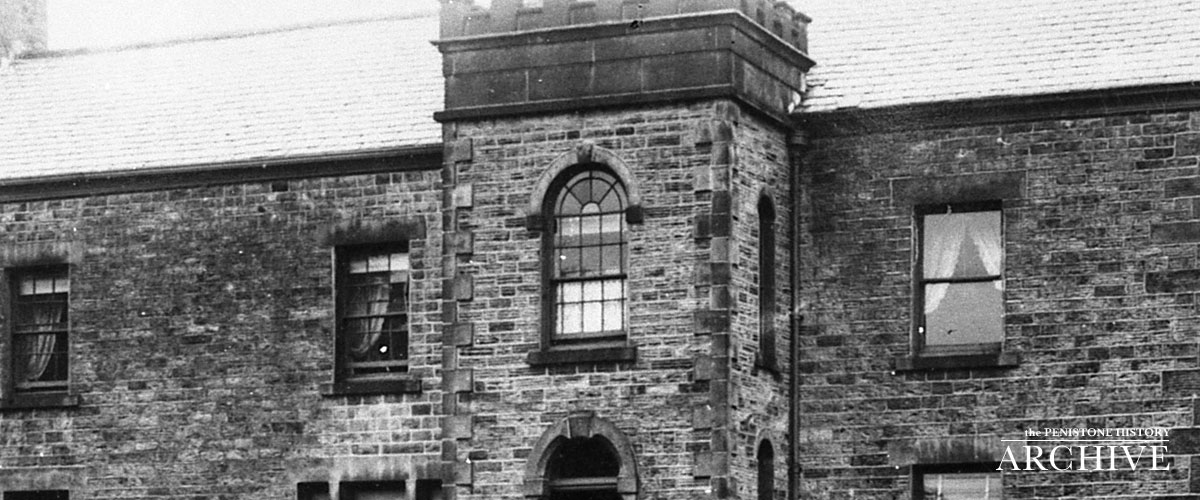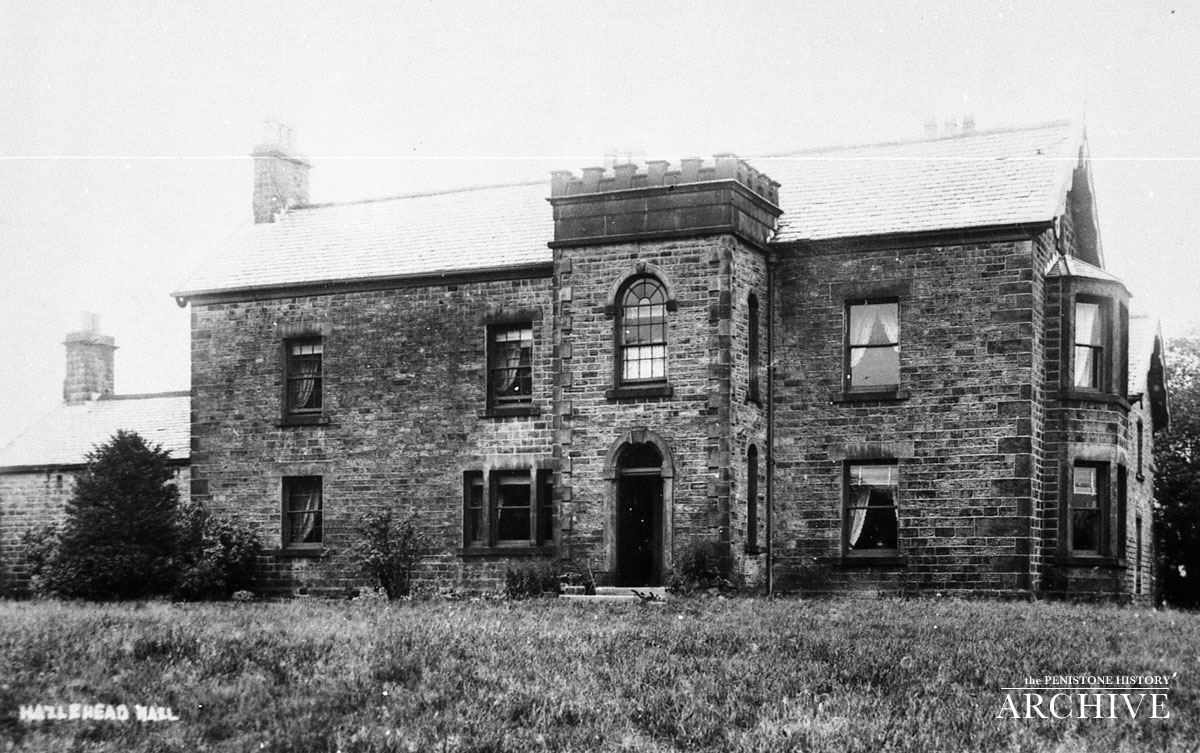Hazlehead Hall
Adam Eyre
Adam Eyre was born in 1614. As a member of the Rich family he was a strongly puritan, as were the Wordsworths, Bosviles and Micklethwaites.
His ancesters, who were Catholics ,came from Crookhill in North Derbyshire. His father Thomas moved into Yorkshire and married Ellen Ramscar. They settled at Hazlehead, then in Thurlstone parish. It was a large moorland estate of over 22000 acres. It stands in the Upper Don valley at 740 feet above sea level. A wooded rocky slope led down to the Don called ‘the rocher’. A Victorian historian, H J Moorhouse, considered thee house as wind-swept, ‘singularly bleak and cold’ with a ‘dreary prospect (view)’
There with the aid of a few servants and labourers Thomas Eyre maintained a farm with, in January 1649, two horses, 27 cattle and 102 sheep.
In 1640 Adam married Susannah daughter of Godfrey Mathewman of Eden-tree Head, another puritan family living in near-by Kirkburton. Adam was also mentioned in that year at Pontefract quarter sessions that same year: he was fined for fathering an illegitimate child upon Mary Turner of Penistone.
Adam and his brother Joseph preferred the Puritan religion!
The vicar of Penistone at this time,Matthew Booth was most unpopular with his congregation. Adam Eyre was one of those who was involved in removing him beginning in 1648. Eventually Henry Swift became vicar and was so popular he stayed in post for 40 years.
When the Civil Wars broke out in 1642, like many other influential local gentry, he fought for the Parliamentary cause. This was in part inspired by protecting his lands and property from Cavalier incursions. He served under General Fairfax’s West Riding army as a captain. He was typical of the Yeoman or ‘middling sort’ whom Cromwell sought to lead his armies as captains.
During the first civil war he became captain of a troop of horses: during the Protectorate he was a minor bureaucrat in the post war (1651) regime. Unfortunately, his note-book of events in the Civil War has been lost.
When he was a civil servant at the Strand in London, he thought of himself a gentleman of London. Amazingly, in 1650 he bought the biggest lot of Crown Land in Yorkshire for £5966.7s and sixpence!
Captain Eyre’s Diurnal (Diary)
This record gives an account of Adam’s material accounts and spiritual deliberations between 1647 and 1649. From this we learn about his difficult marriage and his daily action and travels.It also reveals he is a man of books, mainly spiritual. He buys books in London and lends them to friends. He is a literate and cultured man, typical of the yeoman class of his time. This diary is regarded as a significant document of daily life in the late 1640s in Northern England. Some times entries record days when he went no-where or when he went to get his horses shoed. Adam had bouts of heavy drinking and he records his wife locking him out of the house after 2 of these sessions, the marriage being somewhat strained by these events.
He also records visits to London and York seeking the back-pay owed to the Parliamentarian troops. He was trusted by fellow officers to pursue their claims too!
Lacking children of his own he spent much time with his kinfolk and meditated in disputes between neighbours. A sample of the diary reads “ This morn my wife went to see her mother…I sent my wife to my fathers to see if he will give me £350, and I will make Hazlehead to her for jointure and release all his (Adam’s) land but Oliver’s Farm.” Adam was always in need of funds!
“This morn my wife began, after her old manner, to brawl and revile me for wishing her to wear only such apparel as was decent and comely ” She (his wife) accused me of treading on her sore foot, with curses and oaths,which to my knowledge I touched not” The next day “This morn I rid to Eden Tree head (his father-in -laws home) to borrow a pan for my wife to brew in”!
Adam died in 1661. He had been a yeoman, a ‘middling sort’ , army captain, seeker of recompense for his army services and that of others, a civil servant and also had a very strong influence on local church matters. He had been a troubled husband who was faithful to his kinsmen. So much in a short but active life.
His diaries covering 1647-49 can be read as they have been published by the Surtees Society.
Modern times
The Hall was restored in 1968 and is a large stone built house with Welsh slate roof. It is two stories high with an ashlar crenellated parapet. It was returned to private ownership.
It is now a luxury hotel, offering pheasant shooting and country pursuits.


